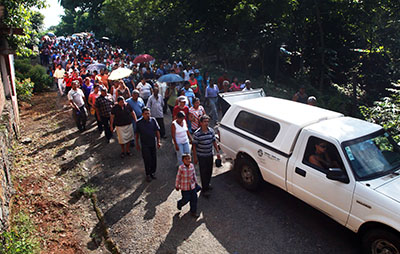Mexico City, August 13, 2014–The Committee to Protect Journalists condemns the murder on Monday of Mexican reporter Octavio Rojas Hernández in the state of Oaxaca and calls on authorities to investigate the killing, identify the motive, and bring those responsible to justice.
The Oaxaca attorney general’s office said in a statement that Rojas was lured from his home at around 5:30 p.m. by an individual who said he wanted to purchase a vehicle from Rojas. The individual then shot the journalist four times in front of his home.
Rojas had worked for two months as a reporter for the daily El Buen Tono in Córdoba, Veracruz state, according to news reports. He mostly covered the police beat, the reports said. He also worked as the communications director for the municipality of San José Cosolapa, Oaxaca, which borders Veracruz state, according to the Oaxaca attorney general’s statement.
El Buen Tono news director Miguel Ángel Contreras told the press freedom organization Article 19 that “everything indicates that [the murder] … was related to some article we had published days earlier that had linked the director of the municipal police of Cosolapa with a ring of gas thieves.”
El Buen Tono published a story on August 9, part of a series on local security issues, about the army and Oaxaca state police breaking up a local ring accused of siphoning gas from pipes belonging to state-run oil company Pemex. Theft from pipelines plagues Pemex and often involves organized crime and cartels such as Los Zetas. The article cited unnamed municipal officials saying three vehicles seized in the operation belonged to local police chief Fermín Vanegas. Vanegas’s whereabouts are unknown, reports said.
While the story appeared without a byline, Rojas is the only correspondent for El Buen Tono in Cosolapa, according to the Mexican news website Animal Político.
El Buen Tono has been attacked in the past, according to CPJ research. Unidentified gunmen stormed the paper’s newsroom in November 2011, barely a month after the newspaper started operations, and set fire to the premises. It received a threat of being burned again in April 2014.
“Covering crime in Mexico, and especially reporting on possible criminal police elements, has far too often proven to be a death sentence for Mexican journalists,” said CPJ Deputy Director Robert Mahoney from New York. “The authorities must break the cycle of impunity in these crimes. The ability of the press to report on issues of public interest depends on it.”
Violence tied to drug trafficking has made Mexico one of the most dangerous countries in the world for the press, according to CPJ research. More than 50 journalists have been killed or have disappeared since 2007. The country was ranked seventh on CPJ’s 2014 Impunity Index, which spotlights countries where journalists are slain and the killers go free.
